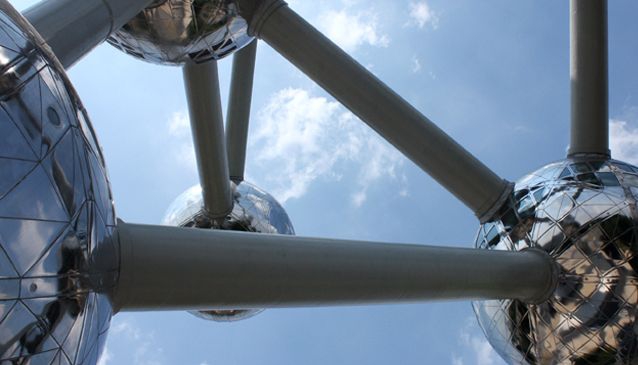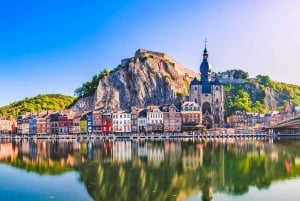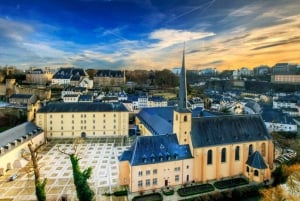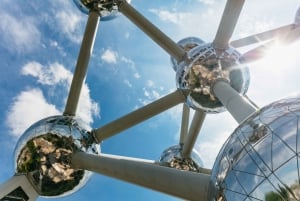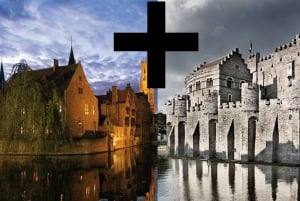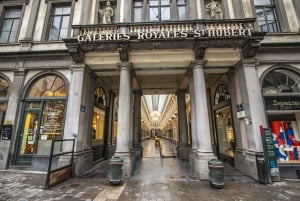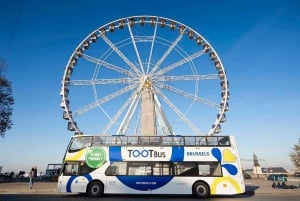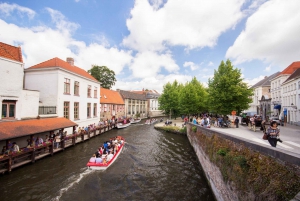Brussels, Boring?
There’s just no way that a city whose icon is a urinating urchin can be considered boring
Book Top Experiences and Tours in Brussels:
If youʻre booking your trip to Brussels last minute, we have you covered. Below are some of the top tours and experiences!- From Brussels: Luxembourg Tour with Dinant Visit
- From Brussels: Guided Day Trip to Dinant and Luxembourg
- Brussels: Atomium Entry Ticket with Design Museum Ticket
- Brussels by Bike: City Highlights and Hidden Gems Tour
- Choco-Story Brussels: Chocolate Museum Entrance with Tasting
There’s a small community located on the west coast of America, a little south of the border between the states of Oregon and Washington, which is unfortunately called Boring. The town flourished with great rapidity in 1901, when the electric interurban light railway was extended past the homestead of a man named William H. Boring, and it was decided that this would be a nice spot to establish a town.
Quicker than William could say ‘beige’, there appeared a Boring post office, a Boring general store, and even a Boring hotel, all supporting a blossoming Boring community. In an attempt to make their town more appealing to visitors and less embarrassing to fill out on forms, the townspeople consorted to establish a motto for Boring: ‘An exciting place to call home’. It is suspected that this actually had an adverse effect, however, and merely presented a larger target for ridicule.
It’s only when you find out about places like this that you can begin to apply some much needed perspective to the notion that Belgium’s capital city, , is a boring place. Regularly does it find itself the recipient of awards for Europe’s most unexciting destination, beating off competition – usually from Birmingham – to claim the spoils (to its reputation). But there’s just no way that a city whose icon is a urinating urchin can be considered anything less than extraordinary.
Take the Grand Place, for example. This field of cobbles is the nucleus around which the forest of Brussels swells, bordered by an imposing wall of gothic architecture that looks like it’s been crafted from drips of melted candlewax. The square was originally a market that grew so popular it spilled into the adjoining streets, which is why you’ll find a nearby Rue au Beurre and Rue du Marché aux Herbes, among a mélange of other mouth-watering avenues.
Had you been there a little over 300 years ago, however, the Place would have looked comparatively unrecognisable, swathed in a thick cloud of gun powder belonging to 70,000 angry French men who’d decided to reduce Brussels’ glorious town hall to an inglorious mound of rubble. In the event, they rather comically managed to hit just about everything but the town hall, which is why most of the buildings in the Grand Place are about three centuries old, rather than seven. The resultant juxtaposition of architectural styles is dazzling, and hasn’t gone unnoticed by UNESCO and their World Heritage list.
Like any city worth its salt, Brussels has more than one square. This one is the Place Royale, a delightfully symmetrical plaza that marks the southern tip of the two-kilometre-long Rue Royale, at the opposite end of which the Basilique Sainte-Marie rises majestically like an ancient rocket frozen mid-launch. Head three quarters of a kilometre the other way and you’ll find the chunky Palais de Justice, poking from Brussels’ cityscape like a pregnant zit, or just around the corner the thick façade of the Palais du Roi, which rather astonishingly began life as a row of town houses.
In fact, pretty much the whole city can be explored without touching a mode of vehicular transport, for Brussels, at just 161 km2, is on a magnitudinous par with Tallinn and Helsinki, and utterly dwarfed by the likes of London and Rome, which both well exceed 1000 km2. More importantly, to vagrantly explore this city is an inexhaustibly delightful endeavour, with architectural and historic splendour exuded not only by the city’s main sights, but by its residential streets too.
For those who don’t have quite so much interest in squares, these are the spectacular Arcades du Cinquantenaire, Belgium’s answer to the Brandenburg Gate. At a domineering 45 metres in height, they reduce everything in their shadow to the size of a Micro Machine, and despite giving the impression of having been around since the last Ice Age, they were only actually built a little over one hundred years ago.
An aerial view reveals the gargantuan archways to be at the nub of a horseshoe defined by the adjoining buildings, like an enormous magnet trying to drag Brussels into its grasp. It presides over the painstakingly manicured lawns of Parc du Cinquantenaire, beneath which the broad Rue de la Loi dramatically ducks underground, resurfacing briefly for a glimpse of the archways before diving back into the earth, like a whale breaking water for air. It is, quite simply, one of the most inspiring vistas in the city, and has doubtless caused a terrifying number of road accidents.
Most cities boast a catalogue of supposedly must-see sights, of course, which is why the true test of a metropolis lies away from the tourist trail, in the everyday places that don’t charge an entry fee or ask you to refrain from flash photography. It is here that you will begin to peel back the glossy veneer and uncover a city’s character, and ultimately discover what it means to call that place home.
This is the Market of the Marolles in the Place du Jeu de Balle, and it’s about as far away from the grandeur of the Arcades du Cinquantenaire as Brussels gets. Strewn across cobbles that have been gently worn by successive generations of Brusseleers, locals congregate here every day from 7am to 1pm to trade in antiques and conversation, generating a convivial atmosphere that reflects the city’s welcoming nature.
The Étangs d’Ixelles, in contrast, are a spellbinding representation of the city’s connection with nature, forming the focal point of a district that once counted Karl Marx and Alexandre Dumas as locals. Although they appear idyllic, the ponds are actually polluted with something called cyanobacteria, a type of algae that can induce botulism. If you’re unlucky enough to catch this, the first you’ll know about it is when your face begins to droop and go lax, followed quickly by the paralysation of every other muscle in your body. Even the pigeons take heed of the ‘No Swimming’ signs.
These ponds mark the tip of an unbroken stretch of greenery that spreads from Brussels’ south-eastern corner and into the Forêt de Soignes, a vast woodland which, on 18 June 1815, found itself the backdrop of one of the greatest conflicts in history. Before the Battle of Waterloo took place, Napoleon made several references to the forest in his memoirs, ridiculing his adversary for positioning his army in front of the dense coppice, and therefore without a clear retreat. In the event, of course, retreat would be the last thing on the Duke of Wellington’s mind.
And then there’s the Atomium. If Brussels had nothing but this, it’d still be impossible to call it a boring city. This is what a molecule would look like if expanded 165 billion times, a cubic structure made from globules and rods that looks like it should be orbiting around a distant sun with James Bond on board. It has a similarly belittling effect to that of the Arcades du Cinquantenaire, and one struggles to imagine it ever getting tiresome to stare at.
The Atomium stands as a monument to Brussels’ prominence on the global stage, built for the 1958 World Fair as a symbol of international peace and optimism, and designed to spark a debate about the future of mankind. This sentiment can be traced throughout the latter half of the Twentieth Century, most evidently with the establishment of the European Union in the city, which in turn spawned a deluge of undeniably sterile buildings and reams of mind-numbing bureaucratic text from which Brussels has struggled to disassociate itself.
It is perhaps to this that the city owes its boring reputation, a barrier beyond which perceptions struggle to reach, yet it is also to this that the city owes a great deal of its repute. The trick is being able to see beyond the preconceived insipidity, however, to look instead at a city oozing culture and charm, a vibrant place not just to visit but in which to live. Adopt this attitude and you’ll soon realise that there’s only one truly Boring place on earth, and that’s in the USA.


